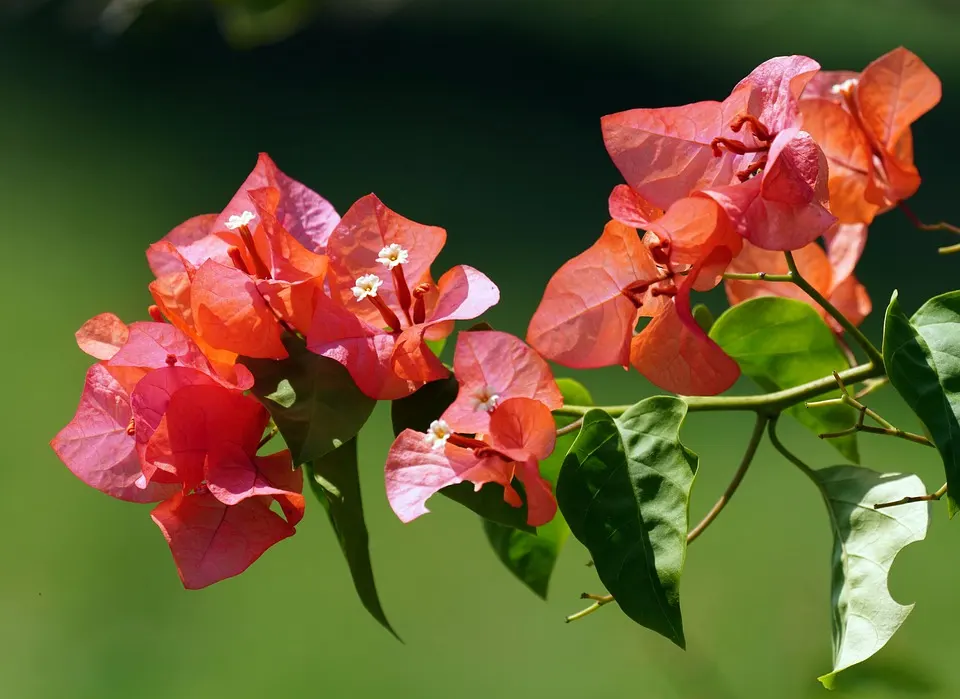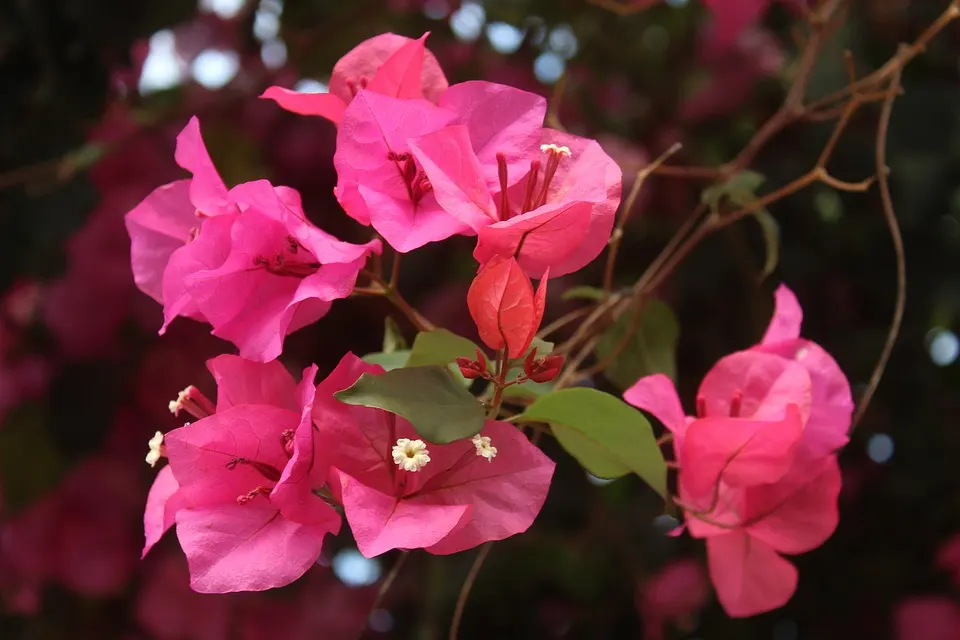How Do You Treat Bougainvillea Fungus?
Bougainvillea is a vibrant tropical climbing shrub with mystifyingly beautiful foliage. Native to South America, bougainvilleas boast brilliant bracts in almost psychedelic colors. Like any of the phantasmagorical marvels of mother nature, however, Bougainvilleas are sometimes prone to illness, disease, and fungus.
Below, we’ll look at some of the more commonly occurring fungal infections that plague bougainvilleas and how to treat them. First, however, let’s take a look at what exactly fungus is.
What is Fungus?
Fungus is a kingdom of often multicellular eukaryotic organisms, which means any organism with a clearly defined nucleus surrounded by a nuclear membrane. One thing that separates fungi from other plant life is that they are heterotrophs. This means that they can’t produce their own food as other plants can.
Trees, flowers, and shrubbery produce their own food through photosynthesis. This process allows them to absorb sunlight, water, and carbon dioxide to create energy in the form of sugar and oxygen that we breathe in. It occurs in a plant or organism that contains a green pigment called chlorophyll. These plants and organisms are known as autotrophs.
In contrast, fungi grow from other organisms and feed off of those host organisms to sustain themselves. This isn’t always a harmful process as fungi are beneficial organisms.
Fungi: The Good, The Bad and the Thoroughly Entertaining
At their core, fungi are the cleaning organisms of the natural world. Their role is to break down dead organic matter and tissues. If you take the image of walking through a dense, lush forest full of greenery and diverse plant life, it’s easier to visualize the importance of fungi. Without the presence of fungi, that beautiful forest would be a mass of decaying organic matter and disease would be a far less desirable desktop wallpaper. Fungi are essential in the development of new life.
During the process of breaking down dead organic matter, fungi release carbon dioxide, nitrogen, and oxygen into the air and soil. These by-products are essential for sustaining plant life, human life, and animal life. In our own daily lives, we use fungi in the fermentation processes of making bread, beer, and all sorts of other staples we rely on.
We even eat certain fungi like mushrooms. Most of us also know the psychedelic and hallucinogenic properties of a genus of gilled mushrooms known as psilocybes; magic mushrooms.
There is, however, a dark side to fungi. More and more fungi are being linked to ailments such as allergic reactions and asthmatic attacks in humans. Some are also known to be the common cause of eye infections that more often than not result in blindness.
In the plant kingdom, there’s another equally serious issue; premature decay. Fungi don’t always grow from dead organic matter; sometimes, they attack healthy tissue. When they establish themselves on healthy tissue, fungi will still perform vital processes like releasing oxygen, nitrogen, and carbon dioxide into the air and soil. Still, they’ll also ruin your carefully nurtured plants, like the bougainvillea shrub you’ve likely been growing for years.
Fungi can also cause an accumulation of harmful toxins in plants, rendering crops unfit for human and animal consumption and causing premature death in the plants. Fungal infections in plants are prone to occur more frequently and rapidly in warmer, more humid weather. The ideal place for plant fungus to take root is in soil with a pH of less than 7 and high moisture levels.
Different types of Fungal Infections in Bougainvilleas
There are several different fungal infections that bougainvillea are prone to develop. Below, we’ll look at some of the more common varieties and how to stop them in their tracks. The fungus can be beautiful, but not when it’s compromising the living conditions of your other plants.
Black Spots
These present dark spots on the upper side of your bougainvilleas leaves. You won’t see them on the underside of the leaf, but they cause leaves to go yellow, often dotted with black. Like most fungal conditions, Black spots rely heavily on the presence of water on the plant’s surface.
This means overhead watering instead of watering roots directly is the best way to support black spot growth and reproduction. Crowded conditions also spur black spots along, and overwatered soil is their happy place.
Rust
Named for the burn-orange color, it shows off quite proudly; rust is a collection of pustules that form under the leaves of your bougainvillea. Rust will result in your bougainvilleas leaves going various shades of orange and brown, and eventually, the leaves will fall from the plant entirely. Rust also loves warm wet conditions and is never happier than when you water foliage instead of roots.
Botrytis Blight
This is a fluffy grey mold that develops on buds, bracts, and mature flowers. Once vibrant and colorful, your bougainvillea will turn into the worst expression of naturally occurring cotton candy. While this is an airborne infection, cool, damp weather nudges it along. High humidity, damp soil, and overcrowded beds and pots will also make Botrytis Blight develop faster.
Bougainvillea Fungus Prevention
Looking at how each of these infections grows and the conditions they thrive in, it’s easy to isolate a few critical preventative practices that are easy to implement.
Dont Overwater
Overwatering is easy. Sometimes we look at our plant babies, and they look a little parched. Instead of emptying an entire watering can out on a thirsty-looking plant, give it a little water and keep an eye on it.
Water isn’t Seasoning, Dont Water from a Height
Focus your watering activities on the root of the problem, the root of the plant. Roots are where plants absorb the majority of their nutrients and life-sustaining products from. Water the soil around your plant’s roots directly instead of watering buds, leaves, and bracts.
Check the pH of Your Soil
A simple home pH test kit available at most drug stores and supermarkets will tell you the pH level of your soil. Elemental sulfur, aluminum sulfate, and sulfuric acid in small amounts can help lower the pH of your soil back to a healthy level. If your soil already has a particularly low pH, you should mix basic or alkaline material into it.
Don’t use sulfuric acid from the hardware store; instead, look for specialized products for plants. Most garden outlets or nurseries have products designed specifically for different kinds of plants, like your bougainvilleas.
Plant Healthy Stock
Sometimes fungal infections come from the plants or saplings we buy at nurseries. Examine all the plants you buy carefully for any sign of infection before bringing them home. Another important step toward a healthy stock is planting your plants exactly where they want to be. The ideal pH level for the soil you want to populate with bougainvilleas is 5.5 to 6.0. Any more or less might foster a breeding ground for fungus.
Dont Overcrowd Your Garden
Most plants dont like to be crowded. Primarily because of how bougainvilleas tend to grow, you shouldn’t plant them too close to each other. Apart from allowing the easier spreading of fungus from one plant to another, crowded plants will likely be watered from above and end up with wet leaves, which is the ideal condition for fungus to develop.
How to Treat Fungus in Bougainvilleas
The easiest way to combat plant fungus is to treat your plants with trusted, proven fungicide products. You can alternatively make up a solution with baking soda that you can spray your plants with. This solution will change the pH level of the plant’s surface to make it inhospitable for fungi. Baking soda works by disrupting the ion balance in the cells of the fungus, which causes them to collapse.
Baking soda is also alkaline, which means it reduces soil acidity when combined into your potting mixes. Less acidic soil produces better quality plants. As stated above, however, if your soil already has a lower pH than it should, you should opt for something a little more acidic to bring the pH back up to that all-important sweet spot for bougainvillea growth.
Final Word
We often believe that either we have so-called green thumbs or not. The reality of plant care is much more complex than that. To ensure your plant stock grows healthily and abundantly, all you need to do is pay attention to the points we covered in this article. Anyone can grow beautiful bougainvilleas and bougainvillea bonsais with knowledge, patience, and a little effort. So take some time to understand your bougainvilleas needs and give it what it craves to thrive.







